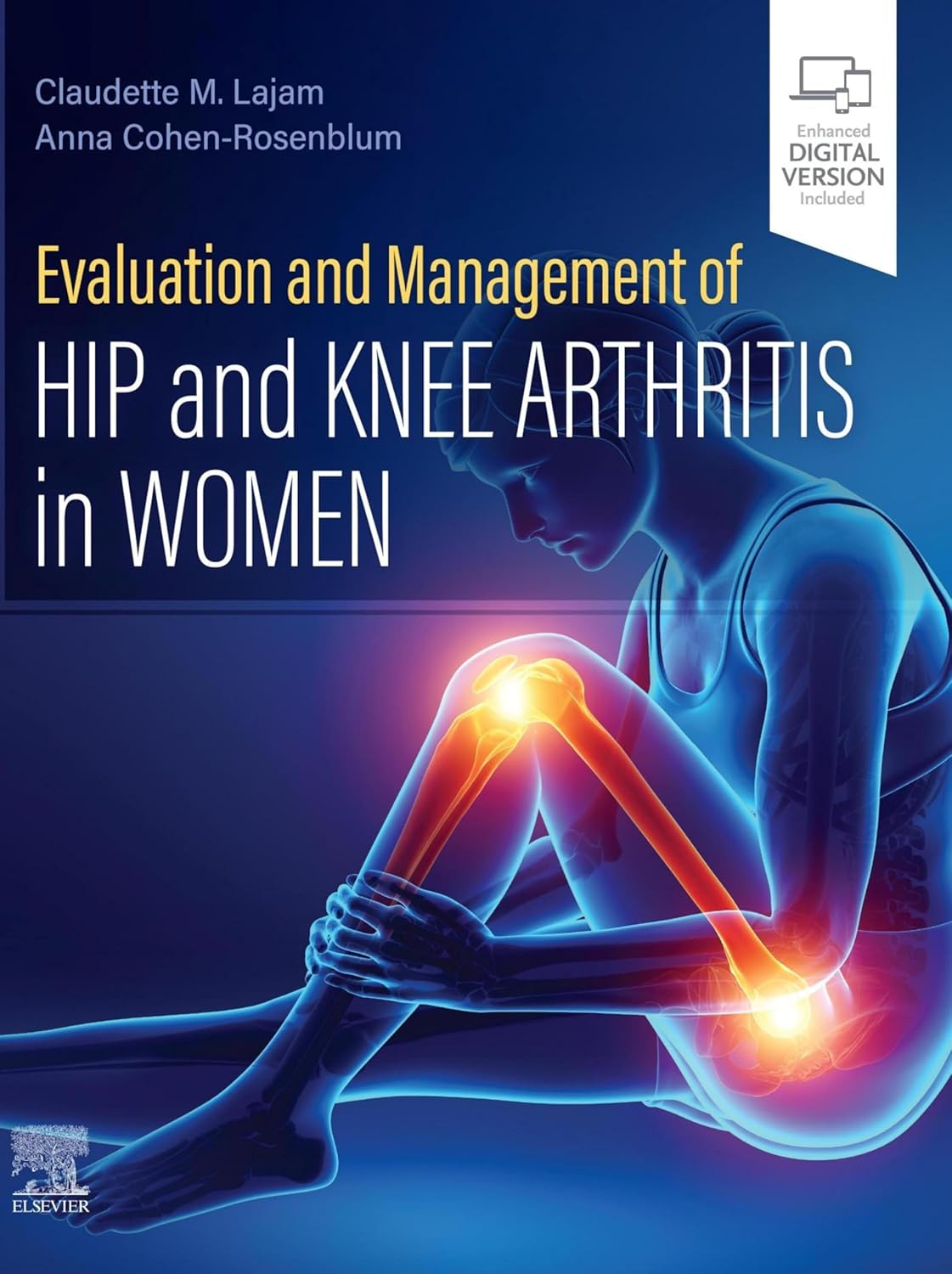● 이 책의 특징
Women often experience arthritis differently from men for many reasons, ranging from biological and joint anatomy
differences to pain perception and psychosocial factors.
Evaluation and Management of Hip and Knee Arthritis in Women is the first reference to directly address the unique
needs of women in this challenging area, helping you improve diagnosis and treatment outcomes for your female patients.
Offering comprehensive, up-to-date coverage of medical, surgical, and sociological considerations, this title is an
essential resource for orthopaedic surgeons and primary care physicians in training and practice, rheumatologists,
adult reconstruction fellows, advanced practice practitioners, and other clinicians who provide care to women with
hip and knee osteoarthritis.
Key Features
● Covers all aspects of hip and knee osteoarthritis that are specifically relevant to women’s health: biological differences and hormonal changes, pain
perception, joint anatomy, comorbid conditions that are more prevalent in women, psychosocial factors and expectations, response to treatment, and research gaps
● Features concise, detailed text accompanied by abundant, high-quality clinical and radiologic images to provide a practical tool for use in the office,
in the clinic, and at point of care
● Discusses intraoperative considerations, including implant design, implant sizing, use of technology, bearing surfaces, and fixation
● Covers etiology of and gender
differences in bone health, and development of hip and knee arthritis
● Addresses postoperative pain and
unique social considerations for women with fibromyalgia, mental health disorders, and/or chronic opioid use
● Includes value-based care
considerations such as impact on health disparities, the doctor-patient relationship, cost to patients, and access to care
● An eBook version is included with purchase. The eBook allows you to access all of the text, figures, and references, with the ability to search,
customize your content, make notes and highlights, and have content read aloud. Additional digital ancillary content may publish up to 6 weeks following the publication date
Author Information
Edited by Claudette M. Lajam, MD, FAAOS, FAOA, FAAHKS, Professor, Department of Orthopedic Surgery, NYU Langone Grossman
School of Medicine, New York, New York, USA and Anna Cohen-Rosenblum, MD, MSc, Associate Professor Department of Orthopedic Surgery NYU Grossman School of Medicine New York, New York
● Section 1 Osteoarthritis in Female Patients
1 Epidemiology of Osteoarthritis in Female Patients
2 Presentation of Arthritis in Female Patients
3 Nonsurgical Options for Management
● Section 2 Systemic Conditions and Joint Pathology
4 Autoimmune Disorders
5 Arthroplasty in the Hypermobile Patient
6 Cancer and Metastatic Disease
● Section 3 Bone Health in the Female Patient
7 Osteoporosis
8 Hormonal Influences on Joint Health and Osteoarthritis
● Section 4 Preoperative Optimization
9 Surgical Risk Assessment
10 Obesity and Malnutrition
11 Psychiatric Optimization in Patients Undergoing Total Joint Arthroplasty
12 Anesthetic and Pain Considerations
13 Infection Risk
● Section 5 The Female Knee
14 Biomechanics of the Female Knee
15 Presentation of Osteoarthritis of the Knee in Females
16 Patellofemoral Arthritis in the Female Patient
17 Surgical Indications for Total Knee Arthroplasty
18 The Female Knee: Intraoperative Considerations for the Arthroplasty Surgeon
19 Postoperative Considerations
20 Conversion Total Knee Arthroplasty
21 Revision Knee Replacement
22 Periprosthetic Fractures About the Knee
● Section 6 The Female Hip
23 Hip Anatomy and Biomechanics
24 Developmental Dysplasia of the Hip
25 Osteonecrosis of the Femoral Head
26 Surgical Indications
27 The Female Hip: Intraoperative Considerations
28 Postoperative Considerations for Females Undergoing Total Hip Arthroplasty
29 Conversion Total Hip Arthroplasty
30 Revision Total Hip Arthroplasty
31 Periprosthetic Fractures of the Hip
32 Cemented Total Hip Arthroplasty
● Section 7 Health Policy and Disparities
33 Health Disparities and Value-Based Care
34 Conclusion and Future Directions
Index


